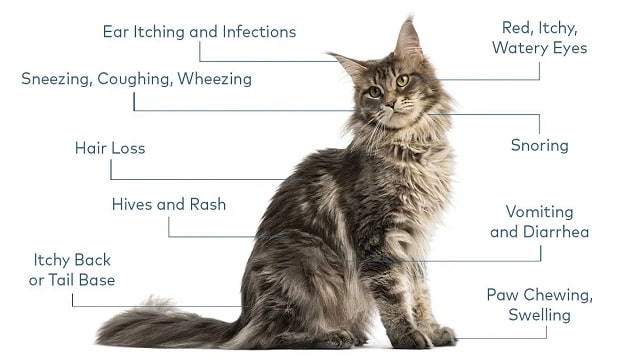Allergist Javier Subiza tells us why feline allergies occur and how to reduce their symptoms.
For an allergic reaction to felines to occur, a genetic predisposition is required, as well as the presence of particles in the atmosphere that cause this symptom, which is harmful to our health. Javier Subiza, an allergist at the Subiza clinic in Madrid, indicates that “these two factors cause the immune system of patients to generate the production of antibodies that bind to proteins (allergens) found mainly in the saliva and secretions of felines, but not in their hair .”
Allergens are airborne in microparticles of scaly skin and when they reach the respiratory mucosa they produce some symptoms such as inflammation of the mucous membranes, bronchial tubes, and/or sneezing. These microparticles are very small and can remain in the air for a long time, and they also adhere very easily to people’s clothes and hair.
Inflammation of the mucous membranes and bronchi and/or sneezing: some of the symptoms of cat allergy
Symptoms and diagnosis for cat allergy
As a general rule, it is very easy to deduce that you are suffering from a cat allergy since the symptoms (sneezing, nasal congestion, itchy eyes, coughing…) usually appear within a few minutes of being in a place where there have been cats or in contact with people who have these pets and improve when we move away from that place or those people.
Javier Subiza explains that “it takes at least six months for the microparticles that accompany people or are found in their homes to disappear completely. Therefore, we may not have owned the feline for months, but its microparticles may remain on our things for much longer.”
The diagnosis is made by the allergist through skin tests. In most cases, people with cat allergies are sensitive to other types of animals, such as dogs. This forces the doctor to recommend the elimination of the pet as a solution to said allergy and to improve its health. When the allergies are mild, the reaction is with sneezing or coughing, but not with inflammation and therefore it would not be necessary to eliminate the feline.
Tips for managing allergies in a bearable way
A home remedy that largely prevents the spread of microparticles is to remove anything that easily transports them, such as carpets, upholstered furniture, and rugs. The movement of these things causes us to inhale the microparticles and cause us to sneeze a lot.
If the patient does not want to stop having his pet at home, it is advisable to place air purifiers – especially in the bedroom – and clean the furniture and walls with damp cloths that absorb dust.
One of the most effective ways to do this is to take your cat to the vet to have it neutered: it has been reported that neutered cats significantly reduce the production of microparticles. On the other hand, treatment for those who suffer from a serious and harmful allergy or are occupational allergy sufferers (such as veterinarians) is reduced to vaccinations. For other allergy sufferers, the treatment is the same as for asthma or rhinitis sufferers.
